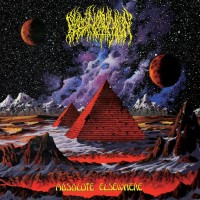WuW - L'Orchaostre review
| Band: | WuW |
| Album: | L'Orchaostre |
| Style: | Avantgarde doom metal |
| Release date: | February 03, 2023 |
| A review by: | musclassia |
01. Orchaostre 1
02. Orchaostre 2
03. Orchaostre 3
04. Orchaostre 4
05. Orchaostre 5
“Nous sommes l’orchaostre”: thus is the mission statement of WuW on the aptly named L'Orchaostre. Comprised solely of two brothers, WuW have a task on their hands to replicate the immense depth of arrangements found within an orchestra, but to give them their due, they do their best.
L'Orchaostre sees WuW join forces with Pelagic Records, a label I’ve not been shy in mentioning my appreciation of; in fact, it was by trawling through their upcoming release catalogue that I first encountered L'Orchaostre. Above anything else, Pelagic Records are mostly strongly associated with post-metal, a genre defined by its exploration of how instrumental layering can interact to create something greater than the sum of its parts, so there’s not many metal genres best suited to a project with the intent of L'Orchaostre (well, arguably neoclassical would be the first choice). The question, therefore, is whether WuW fall within the expected profile of a Pelagic band, or if they’re a wildcard.
On that front, there’s some bold words in the promotional materials that suggest that it could be surprising; L'Orchaostre is a “five-part doom symphony”, while the brothers Benjamin and Guillaume Colin are inspired by classical music, free jazz and drone, and that’s not even mentioning the ‘avantgarde doom’ tag that their profile inherited on this site. How accurately does this background indicate the sound of L'Orchaostre? Well, I would say that this album is doomier than a lot of post-metal, and there’s also some curiosities to be found within song structures and progressions. At the same time, if I was to go out and categorize this album as succinctly as possible, I would call it ‘instrumental post-metal’, and I’m not sure it’s as unusual in its execution as, say, the Natt debut I reviewed earlier this year.
Still, this isn’t just the latest in a long line of identical instru-post records. There is a sedate trudging pace to “Orchaostre 1” that betrays some of that doom inspiration, but it’s the synth arrangements that draw one’s attention more; bright and dramatic, the synths offer a sci-fi tone to parts of this opening track that goes nicely with its crunching metallic weight. Both the doom and synths again draw one’s attention on “Orchaostre 2”; with the tempo turned further down early on, this track builds ominously for a prolonged period of time, before transitioning into something a tad brisker. With this transition into a more galloping rhythm, however, both bright lead guitar melodies and dramatic synths akin to those used by the likes of Monolithe up the intensity.
The synths feel less of an attention-grabber after the first couple of movements; “Orchaostre 3” seems to veer even further towards Monolithe-style doom, but with the metal at the forefront, lurching around menacingly from segment to segment. The ending couple of moments see the album veer closes to conventional instrumental post-metal territory, with the typical dynamic shifts, tremolo layers, sludgy riffing and towering percussion; one can easily hear the self-declared influence of WuW’s compatriots in Year Of No Light and Dirge.
Ultimately, as far as instrumental post-metal is concerned, this is on the more intriguing end of the spectrum, from the doomy tempos and unusual synthwork to some of the less predictable twists and turns in the song. At the same time, I’m not sure quite how much of an orchestral experience it really feels; it’s not quite as bold as I anticipated from the descriptions, and while I enjoy it for what it is, it doesn’t quite have enough about it to impress me in the way that Natt did with their own entrant into the genre this year.
Rating breakdown
| Performance: | 8 |
| Songwriting: | 7 |
| Originality: | 6 |
| Production: | 8 |
Hits total: 1895 | This month: 6





